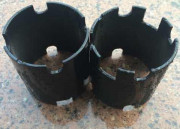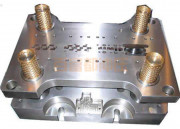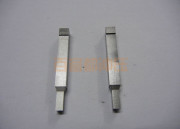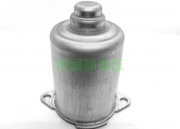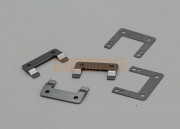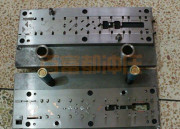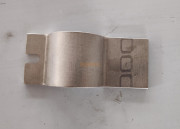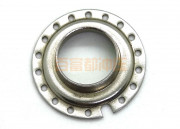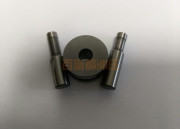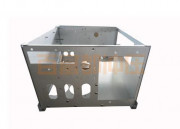>
1. How to avoid damage as follows:
1. The sliding hinge cannot be made of aluminum alloy material, but stainless steel material should be used.
2. Sliding windows with a width greater than 1 meter, or doors and windows with double-glazed glass, should be equipped with double pulleys or use movable pulleys.
3. Hardware accessories should be Z-terminals, door and window locks. Handles, etc. should be installed behind the window and door frame to ensure accurate position and flexible switching.
4. When using fastening screws to install hardware, there must be a metal backing plate, and the thickness of the backing plate is at least twice the pitch of the fasteners. It cannot be used to fix plastic profiles, and non-metallic linings cannot be used.
5. The type, specification and performance of the hardware accessories used should conform to the current national standards and relevant boundaries, and should be used in conjunction with the selected plastic steel doors and windows.
6. Pay attention to maintenance after installation to avoid corrosion. When used every day, lightly close and lightly open to avoid damage caused by hard opening of the hard tube.
How to inspect metal stampings? Rockwell hardness tester is used for hardness test of metal stamping parts. Such as: small, irregularly shaped stamping parts, can be used to detect small planes, can not be used for ordinary desktop Rockwell hardness tester.
PHP series Rockwell hardness tester is especially suitable for hardness testing of such stamping parts. Aluminum alloy stamping parts are common parts in the fields of metal processing and mechanical manufacturing. The processing of stamping parts is a processing method in which metal sheets and strips are separated or formed using molds. It has a wide range of applications.
The main purpose of the hardness inspection of blanking parts is to judge whether the annealing degree of the metal plate is suitable for the processing of stamping parts in the future. In the processing of different types of stamping parts, there are requirements for plates with different hardness levels. Webster hardness tester can be used to test the processing of stamping parts. When the data exceeds 13mm, it can be replaced by a barcol hardness tester, and a barcol hardness tester can be used for pure aluminum or low-hardness aluminum alloy sheets.
As far as the stamping industry is concerned, stamping is sometimes referred to as sheet metal forming, but it is slightly different. What we call sheet molding is a forming method of plasticizing raw materials such as thin plates, collectively referred to as sheet forming. In this case, the deformation in the direction of the thick plate is generally ignored.
Second, optimize the planning method of metal stamping parts.
The reasonable planning of the mold is the basis for improving the durability of the mold. In order to improve the durability of metal stamping dies, unreasonable factors in product forming should be fed back in time during die planning. If you plan to punch a small hole metal mold, the method of adding a guide sleeve should be used to strengthen the strength of the small hole mold punching needle. Also, the guide needle should be as short as possible. Decreased length equals increased strength.
3. Appropriate heat treatment of metal blanking parts.
High-quality metal stamping dies and the selection of plates should be properly heat treated to improve the durability of metal stamping dies. Such as quenching, vacuum heat treatment, etc.
Fourth, the rational use of metal stamping dies can ensure processing accuracy.
In terms of hardware mold life, mold accuracy has a great influence on mold life. Before making the mold, the mold must be installed. Commissioning the mold requires locating all the holes and installing the mold prior to production. When the mold is installed, the straightness of the support surface of the mold and the fixed plate, and the uniformity of the distance between the hardware mold and the guide sleeve have strict requirements on the guiding accuracy of the guide post. The higher the manufacturing and installation accuracy, the more accurate the machined parts will be, and the higher the durability of the metal mold will be.
Fifth, choose the correct amount of punching.
In order to improve the durability of the hardware blanking die, the blanking die with high precision and high rigidity should be selected. For stamping more than 30%, it is better to use the servo to control the punch. The servo is equivalent to a transformer, with constant current and stable voltage, which not only protects the durability of the machine tool, but also improves the service life of the mold.
6. Reasonable use and protection of molds.
In order to improve the durability of metal stamping dies, operators must regularly protect and maintain the dies under reasonable conditions of use. It is best to maintain and repair the metal stamping dies every day, which can effectively avoid the appearance of metal stamping dies.
According to the above related content of metal stamping die processing, metal stamping parts are light in weight, satisfactory in strength and rigidity, and can be processed into parts of various shapes and sizes according to different uses and materials, and have a wider range of applications. Hope the above content can be helpful to readers.
Read More →

